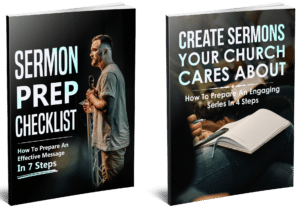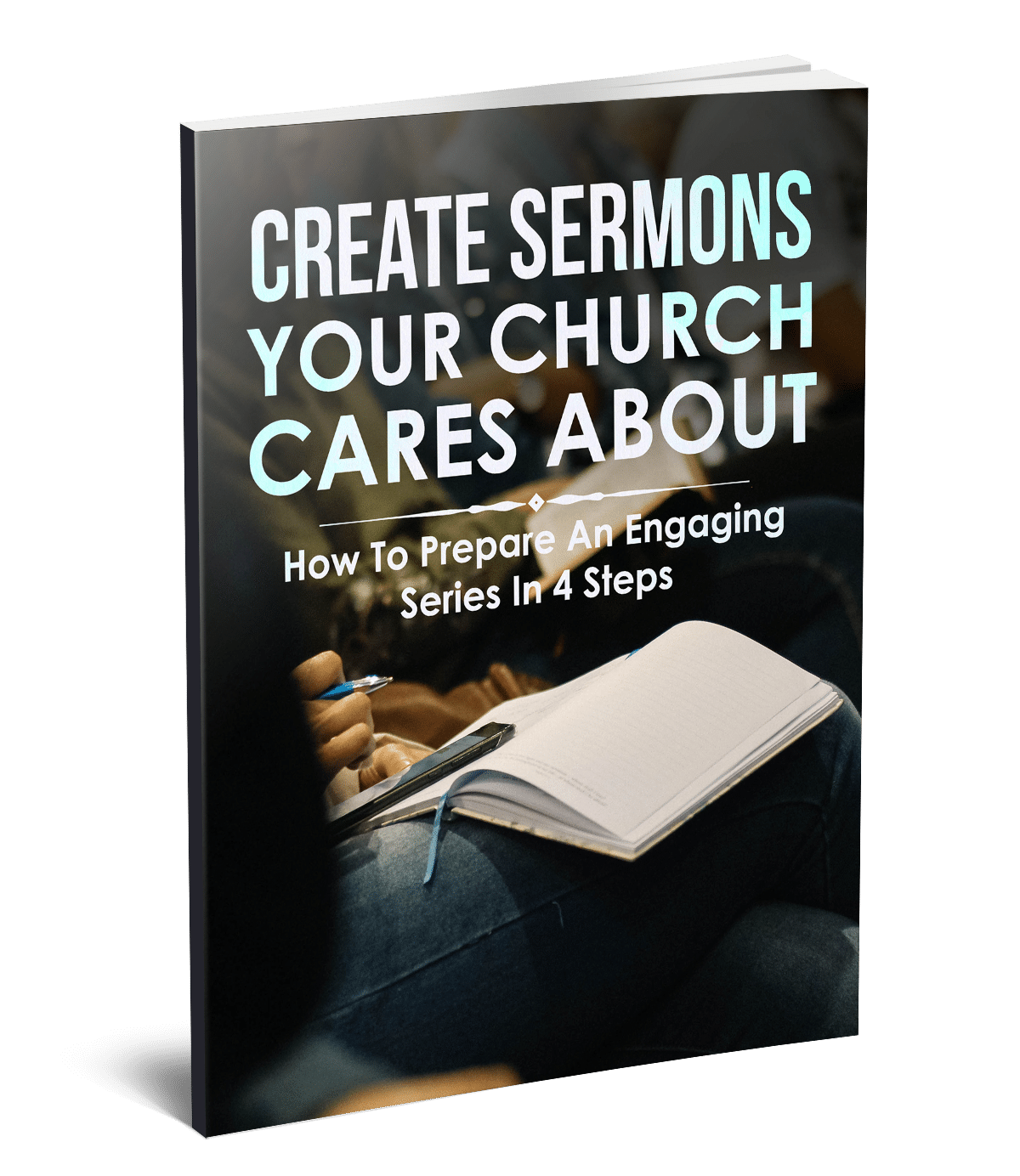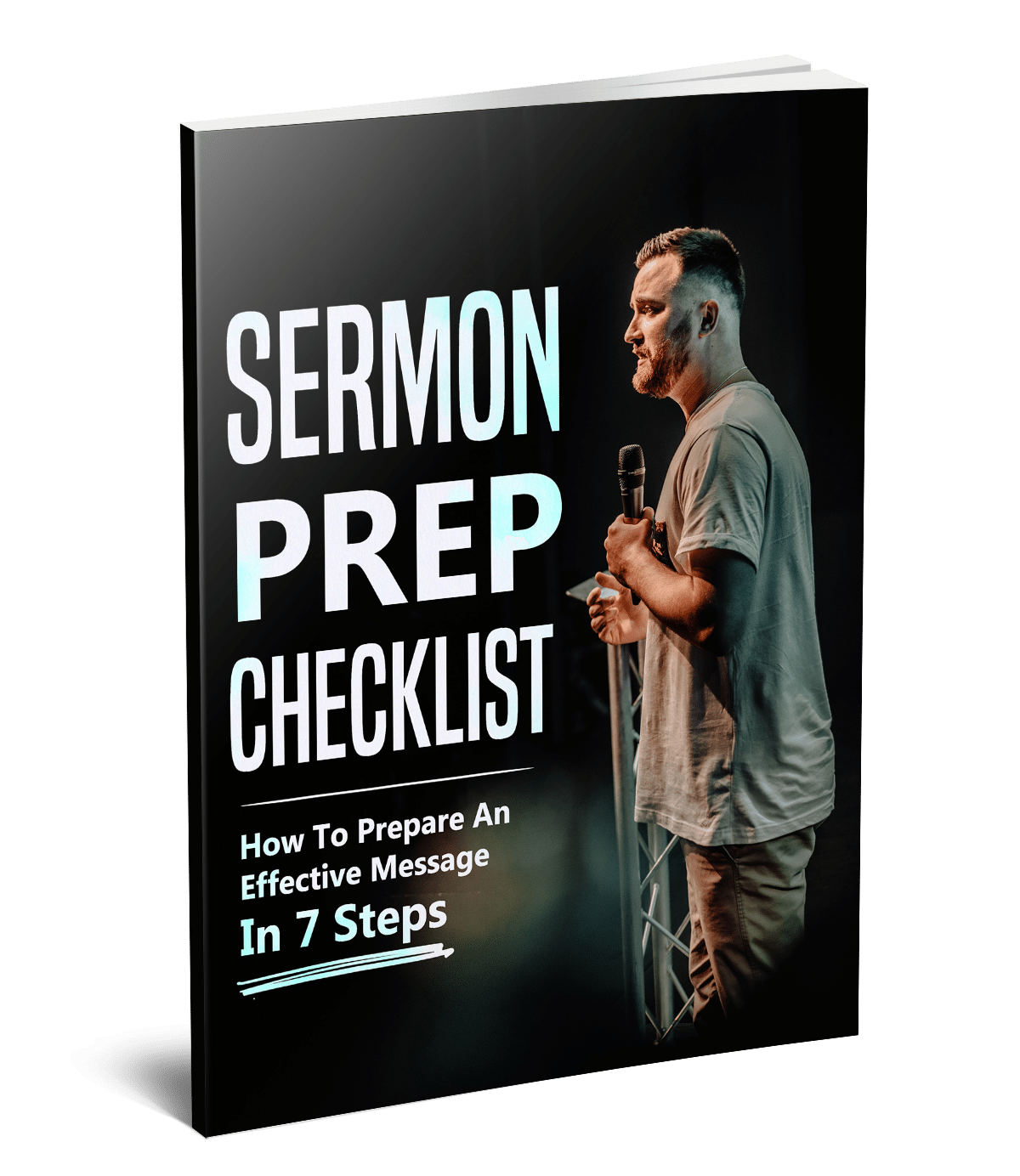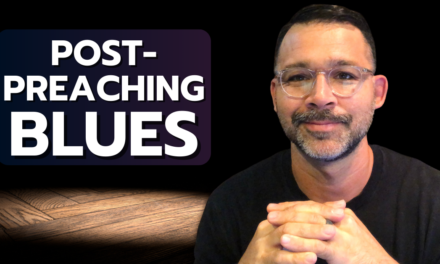Every preacher and team have been there… What will I teach next? I’ve been there too! It’s stressful, yet seemingly unnecessary pressure. With this in mind, I developed a sermon series planning worksheet to identify ideas for upcoming messages.
Using a good process to plan the next sermon series will create room for creativity, excellence, and alignment within your team.
Often, the communicator desires space to speak freely about what is in their heart. Not to mention, creating a sermon week after week throughout the year is a challenge.
Because of this, it is understandable that preachers craft messages the week of, as opposed to a month or two out.
A sermon series format is helpful because it provides a focal point for the preacher while also allowing space to speak freely within that theme each week.
Also, a properly planned sermon series will give your team time and direction to help supplement the message with creativity.
Using a sermon series planning worksheet will provide lead time to communicate to the congregation about upcoming messages and why they won’t want to miss them!
These stretches of four to eight weeks are the ways to focus your audience and your community on what it is that you’re talking about the teachings of Jesus and the Bible. – Unseminary
The benefit of a series of messages is it allows time each week to spend on an important idea or issue related to the series theme. As a result, by the end, you’ve provided well-rounded and helpful content related to the series topic.
Keep in mind, the purpose of using a sermon series planning worksheet is to provide time and space for creativity, not to restrict it.
A really good message series planning process creates flexibility for both the teaching pastors AND for the creatives. – Tony Morgan
A thoughtful approach to the next series at your church will be appreciated by your team, congregation, and even the community.
Save yourself and your team time by downloading the sermon series planning worksheet. As a bonus, you’ll also receive the Sermon Preparation Worksheet too!
Click the button below to purchase the bundle using the easy-to-use digital download and get immediate access to the worksheets and free bonus!

Below is an outline of each step included in the sermon series planning worksheet, with question prompts too.
4 Step Sermon Series Planning Guide
Step 1: Identify The Theme: What does God want me to say?
Grasping what God may want you to focus on in a sermon series may seem like an elusive task. However, I believe God wants to help those who prepare messages to effectively share His heart.
Asking a question like, “What is God currently doing in my life?” can start uncovering topics God may want your team to plan for.
Below are more helpful questions:
*What issues or problems are currently breaking my heart?
*Which scriptures am I currently reading?
*What is a felt need currently within my community?
Discussing questions like those can help you get a sense of where God could be leading your next sermon series.
Step 2: Brainstorm Related Topics: What topics are relevant to the theme?
Asking more questions will help reveal weekly sermon topics that fit within the theme of the series.
The following questions will help you discover important topics, needs to be met, and solutions for people’s problems.
*What hopes and desires do people have related to the sermon series?
*Which problems can be solved by addressing this theme?
*What feelings do people have concerning the sermon series theme?
*Which questions have been asked related to the theme?
Answering these types of questions will help ensure consistency throughout the series. Most importantly, your congregation will engage with the messages. Furthermore, people will appreciate the support you’re providing them through a thoughtful and creative sermon series.

Step 3: Discuss A Target Audience: Who do you want to reach through this series?
At first thought, this may seem unnecessary or superficial. Churches land on different sides concerning the idea of targeting a desired audience (not to mention sermon series too).
Knowing who your target audience is and what they need will help you determine the best methods and the best time to connect with them. – Fluid Church
I do believe it is important to put a little thought behind this for a few reasons: 1) Who will this sermon series be the most helpful to? 2) Are there people who will think this series isn’t relevant to their life? 3) If so, which aspects of the preaching should focus on principles rather than specifics?
When you do a decent job of thinking what my audience is thinking, the content resonates much more deeply. – Carey Nieuwhof
With a little consideration, for those you’re hoping to reach you can more adequately speak their language and meet their needs through the sermon series.
Step 4: Clarify The Bottom Line: What is the main point of the entire series?
The power of crafting a bottom line is that it makes the purpose of the sermon series crystal clear.
To formulate a bottom line use the following guidelines:
- Take your time (a bottom line is deserving of it).
- Shorter is better.
- Avoid cheesy (just because it rhymes, seems funny, or is even short doesn’t mean it’s effective or clear).
- Provide clarity.
Ultimately, a bottom line is a focal point through the entire planning and preaching process. Additionally, an accurate bottom line will help others immediately understand what the series is about and remember from week to week.
Depending on the size of the team you work with, you may need more or less time than six weeks from when the new series will start.
I like planning a series six weeks out from when it begins. Also, make sure the right people are at the planning meeting, I suggest around 3-5 people. Specifically, these could be people who are communicators on your team, creatives or ministry leaders. They need to be people you trust and can have healthy discourse with.
Furthermore, provide your teams with the content created using the sermon series worksheet. Next, allow them to use the information to brainstorm ideas for creative elements, communications, and resources to further supplement the series. Finally, have a follow-up meeting two weeks later to solidify creative elements and resources that will support the series.
Using a six-week sermon series planning meeting, followed by a two-week followup meeting to confirm creative elements, still allows the team to work one month out from when the series is scheduled to start.
If you or someone you know will be the one creating the weekly messages, check out this post: Sermon Prep Checklist: How To Prepare An Effective Message In 7 Steps
Or, purchase the bundle now that includes both the sermon series planning worksheet and the sermon preparation worksheet together.

Do you need help crafting messages or church communication? Check out the following posts:
How To Write Compelling Church Vision Statements In 6 Simple Steps
How To Define Your Church Core Values In 5 Simple Steps
How To Create Engaging 3 Point Sermon Outlines That Inspire Growth





